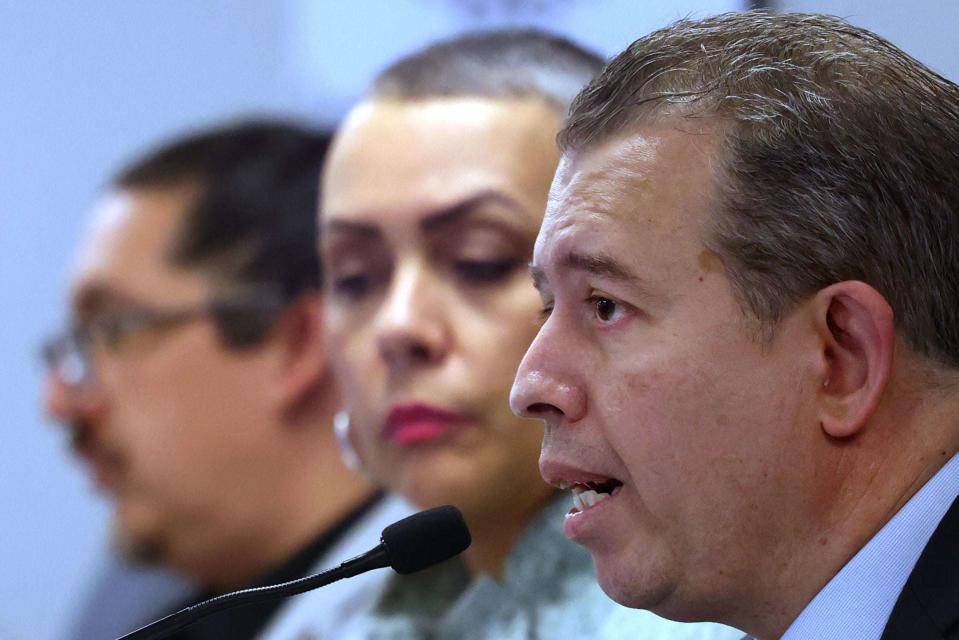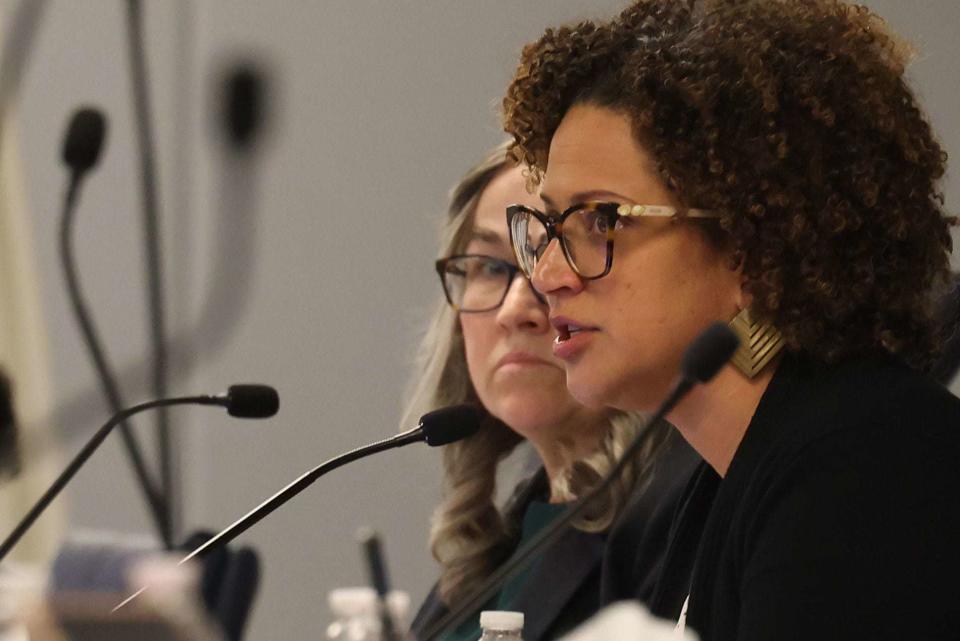Chicago Board of Ed votes to shift priorities from school choice to neighborhood schools
Signaling a paradigm shift in a school system largely shaped by choice, the Chicago Board of Education passed a resolution Thursday to prioritize neighborhood schools in Chicago Public Schools’ forthcoming five-year strategic plan — a document that will guide investments in the district through 2029 and is slated to be released in June.
Among a range of goals aimed at “disrupting cycles of inequity,” the resolution commits to “transition away from privatization and admissions/enrollment policies and approaches that further stratification and inequity in CPS and drive student enrollment away from neighborhood schools.”
Described by board members as a declaration of intent, the resolution won’t have immediate consequences for charter, magnet or selective enrollment schools, to which students must apply through a competitive, high-stakes process.
But, as community engagement events unfold this winter and spring, accountability for underperforming charter school operators will be up for discussion, as will potential changes to the current admissions and enrollment policy, board Vice President Elizabeth Todd-Breland said at a news briefing Tuesday.
Selective enrollment “has provided opportunities for some, but our data is showing it has also exacerbated inequities,” Todd-Breland said at the board meeting Thursday.
The eventual impact could be seismic, with more than 75% of high school students and about 44% of elementary students attending schools outside of their neighborhood boundaries as of last school year. White and Asian students disproportionately attend CPS’ selective enrollment schools. Meanwhile, Black students face persistent opportunity gaps, disproportionately attending neighborhood schools long starved of investments, officials and community organizers said.
“Policies of desolation have impacted Black and brown communities,” said community organizer Jitu Brown, who helped launch at Dyett High School a program known as the Sustainable Community Schools model, in which grassroots organizations provide students with wraparound services.
Although Thursday’s resolution offers scarce details regarding what a shift to focusing on neighborhood schools might entail — and officials have declined to elaborate before community members can weigh in — it does commit CPS to progressing toward a districtwide sustainable community schools model. Dyett is one of 20 sustainable schools in CPS.
“I’m really hopeful,” Brown said of “real partnership” developing between CPS and grassroots organizations.
“I have gone to the funerals of young people who were killed because their school was closed and they were at the wrong bus stop,” he said. “That experience will not be shortchanged. We are going to move in a new direction.”
According to community schools expert Emily Woods, an expansion of that model in New York City had positive impacts on academic and discipline outcomes and student attendance.
A high-level of buy-in from community members and the city is key to the success and sustainability of community schools, Woods said.
Mayor Brandon Johnson praised sustainable community schools earlier this fall and the Chicago Teachers Union, which buttressed his mayoral campaign, has partnered with the district in implementing the model thus far. Having diversified funding, including from the state is also key, Woods said.
CPS CEO Pedro Martinez said that, ideally, families will have access to both strong neighborhood and magnet options. “It shouldn’t be a competition between schools,” he said, but rather, “what’s the best fit for your child.”
Moving away from selective enrollment is crucial to creating an equitable school system, said Scott Thomas, a former magnet school principal and former director of Magnet Schools of America who’s now the director of educational opportunities for a public school district in Minnesota.
“Highly selective processes that are based on academic criteria limit students opportunities and look through a fixed mindset that children don’t grow,” he said.
It will also be necessary to continue offering students strong options — that aren’t based on academic criteria — outside of their neighborhoods, he said.
“You can increase the quality of your neighborhood schools while still providing choice,” Thomas said. “The question is, what type of choice are you offering and is it actually available to all in a meaningful way?”
In offering programs at scale, magnet schools can play an important role in preparing students for the economy, he said.
There’s a need for aviation career paths, for example, but for a program to be successful, it would need to be available to a wide audience of students, he said. And in giving students access to thematic content that matches their interests, such as STEM, health care and arts, Thomas said magnets can enhance student engagement.
“We have to provide schools that students want. If we don’t, the private sector, they’re champing at the bit to do that,” Thomas said.
But that doesn’t mean magnet options will always remove students from their neighborhood schools, he said, citing examples in which students do “book work” at their neighborhood school while attending a magnet school in welding, for example, for a finite period of time needed for hands-on learning.
“It’s really about thinking differently about, ‘How are we bringing services to the students?’ instead of having to bring students to the service. There are some creative models out there,” he said. “But it’s a fine tension, because there are only so many dollars out there.”
In a statement issued after the board vote, the Chicago Teachers Union described it as a step in the right direction.
“Most CPS students attend neighborhood schools that lack the classroom resources for their school communities to thrive. ... This lack of focus on resourcing our classrooms is a tragic failure,” the union wrote.
“Now more than ever, we should be focused on establishing and strengthening (career and technical education) programming and career pathways, building well-resourced and fully staffed neighborhood schools, allocating resources for the expansion of sustainable community schools, and fixing the deep and inequitable flaws in the selective enrollment process.”


